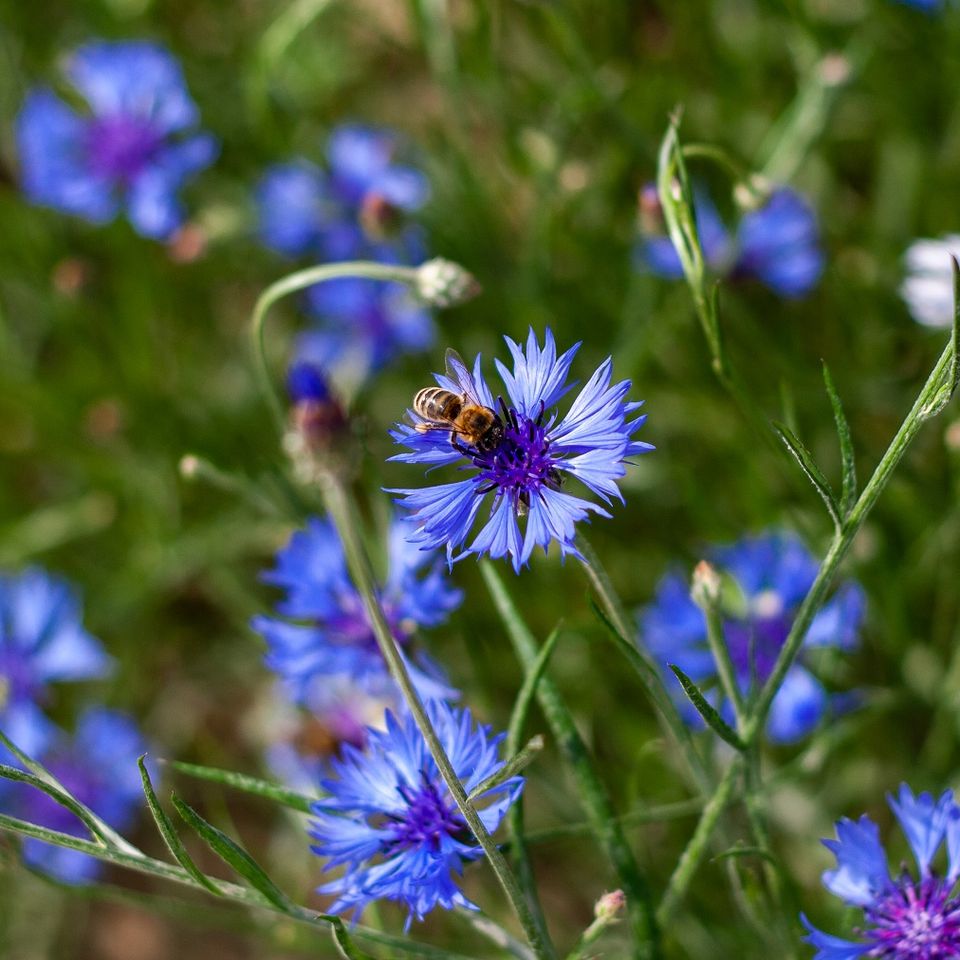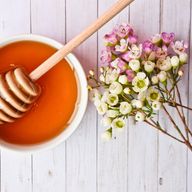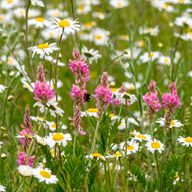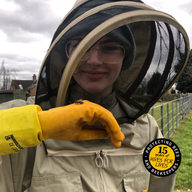
What was the focus of your PhD research?
My PhD focused on an important aspect of pollinator conservation: how can we make sure there are enough flowers in the landscape for bees and other flower-visiting insects to survive and thrive?
There are plenty of sides to this question! So, in my four-year PhD I’ve focused in on two key factors. Firstly, I’ve observed foraging insects to study how they compete with each other for food, i.e. nectar and pollen from flowers. This is important since understanding more about competition means we can target pollinator conservation measures such as flower planting schemes more effectively, for example by providing more flowers at times of the year when competition is particularly strong. Secondly, I’ve used questionnaires and interviews to find out more about how members of the public can act to provide flowers for insects, such as through pollinator-friendly planting and allowing wild insect-attractive plants like dandelions and bramble to grow.
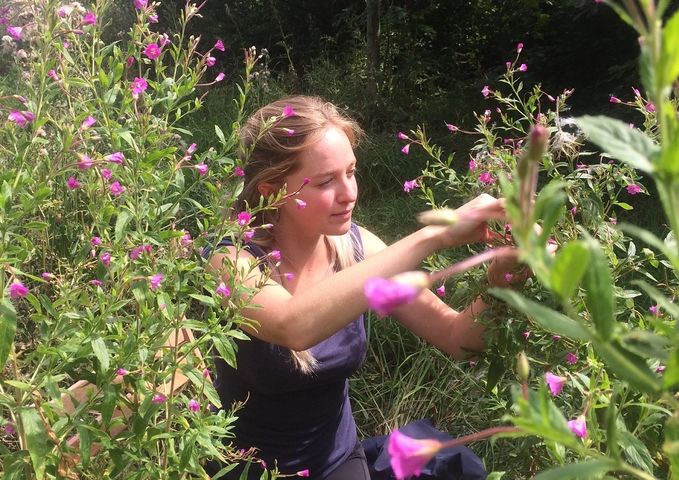
Why is this an important area to study?
As well as their intrinsic value, bees and other flower-visiting insects are hugely important to humans since they pollinate approximately 80% of wildflowers and crop plant species. This means they underpin the health of entire ecosystems as well as providing us with food (especially the tasty and nutritious ones like fruits, nuts and seeds), fuel and fibres.
Many people will know that many insects are facing challenges, with some species experiencing declines or even risk of extinction. One major reason for this is a lack of food in modern landscapes. In the UK, flower abundance has drastically decreased in the past century and a half following the intensification of our agricultural system. Urbanisation also plays a part, although this is a mixed picture since some urban areas like gardens and allotment provide lots of flowers.
Research provides an opportunity for us to understand how to address this problem effectively. We can all act to improve conditions for honeybees and other pollinators, for example by planting flowers or allowing them to grow.
What were the biggest challenges and highlights of your PhD?
The biggest challenge by far was finishing my PhD during the Covid-19 pandemic. I had to cancel a couple of planned projects, quickly design and carry out replacement ones and write up my thesis, all away from the lab and all the support I usually have there. It worked out fine in the end, but it was a bit of a spanner in the works, as it was for everyone.
There have been so many highlights – visiting the apiaries on cold winter days with our beekeeper Luciano, fieldwork in the summer, having my first paper published. I’ve learnt so much about the natural world and had an incredible team of people to work with.
What made you want to study honeybees and other insects?
I wanted to study something with an applied focus. Ever since I was small I’ve hated knowing that we are losing biodiversity, that the rich abundance of nature is being gradually eroded all around us in ways that are mostly out of our control. By studying insects, which underpin biodiversity through pollinating plants, I hoped in some way to make a contribution towards conservation efforts.
Added to this is just the fact that insects are some of the most diverse, fascinating creatures on the planet – and they’re on our doorstep. Who wouldn’t want to know more about the bumblebee you see working busily by the roadside, the butterfly floating past or what exactly goes on inside a honeybee hive? There’s a kaleidoscope of colourful, weird beings buzzing or hovering or courting or sunning themselves as soon as you stop and look around on a sunny day. There’s a whole world under our noses, but still so much we don’t know.
What were your key findings and has any of the research been published?
Four of my research projects have been published so far and all the papers are open access, so you can check them out here. I also spoke about my research into people and pollinator-friendly planting in a podcast episode, which you can listen to here.
For me, the most interesting finding was in my experimental studies of competition between bees and other insects for flower nectar. In one study I found that honeybees and bumblebees undergo much stronger competition for lavender nectar in late summer than earlier and later in the year. This adds to previous LASI research showing that conditions for honeybees and other insects may be particularly challenging in July and August in southeast England, and likely other parts of the UK as well. This is important since it tells us which times of year it’s most necessary to provide more flowers for bees and other insects.
Does your research suggest there is anything the public can do differently to help bees?
Yes, definitely. Three main things come to mind. Firstly, lots of people plant flowers for bees, but we could all plant more insect-attractive plants. The more the better! There are some evidence-based lists of plants that provide food for different insects including bees, for example this great one on the Buzz Club website. You can look for the RHS Plants for Pollinators label when buying plants, too.
Secondly, we could all start to look at our local areas a bit differently. If everyone saw road verges, public parks, streets and even buildings as potential homes for flowers, we could improve conditions for flower-visiting insects just by reducing the amount we mow or otherwise remove common wildflowers. This applies to private gardens, but also supporting council action to allow more wildflower areas in public spaces would be a great help.
The third point relates to keeping honeybees. Honeybees live in colonies of up to 60,000 workers, with one strong colony collecting an estimated 120kg of nectar and 20kg of pollen per year. They fly huge distances and are incredibly efficient foragers, and my research suggests that they can sometimes displace wild insects, particularly bumblebees and larger solitary bees, from their preferred flowers. Keeping honeybees is often seen as a way to help bees, but adding many hives to some areas may increase the pressure on wild insects, especially where there is already strong competition for the food that’s out there. Ultimately this comes back to the same conclusion, namely that the best way we can all help bees is by planting insect-attractive flowers, since this is a sure way to help the honeybee and other insects including wild bees.
